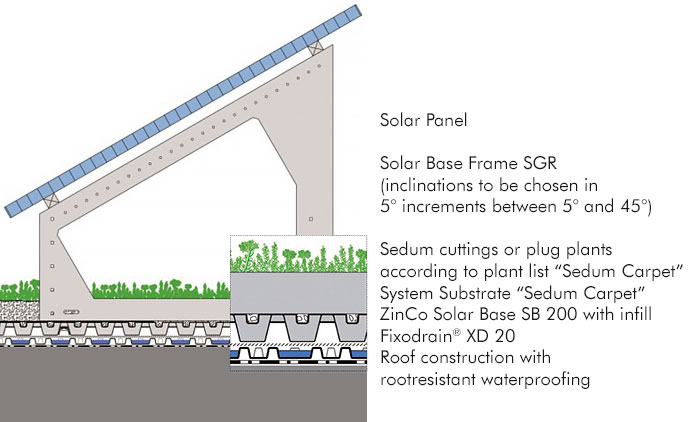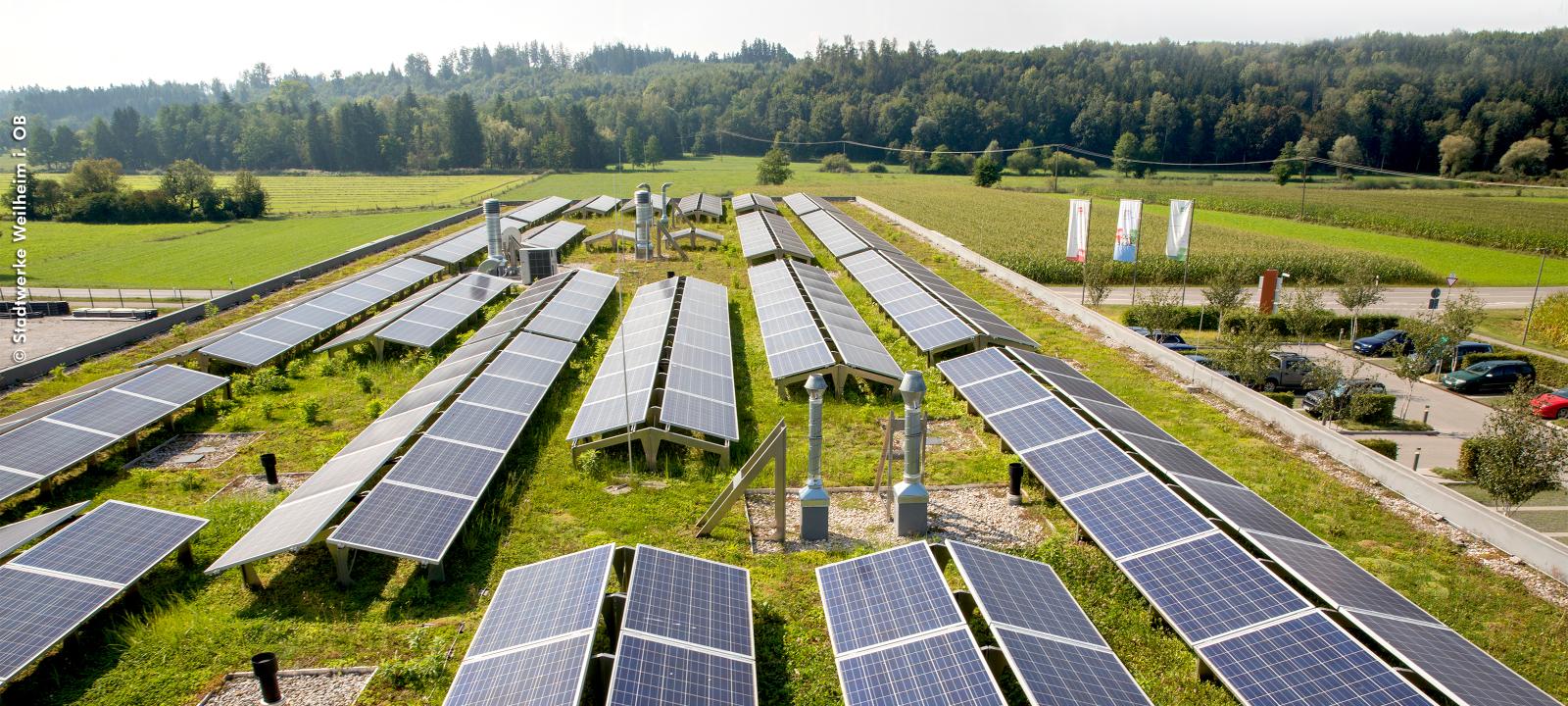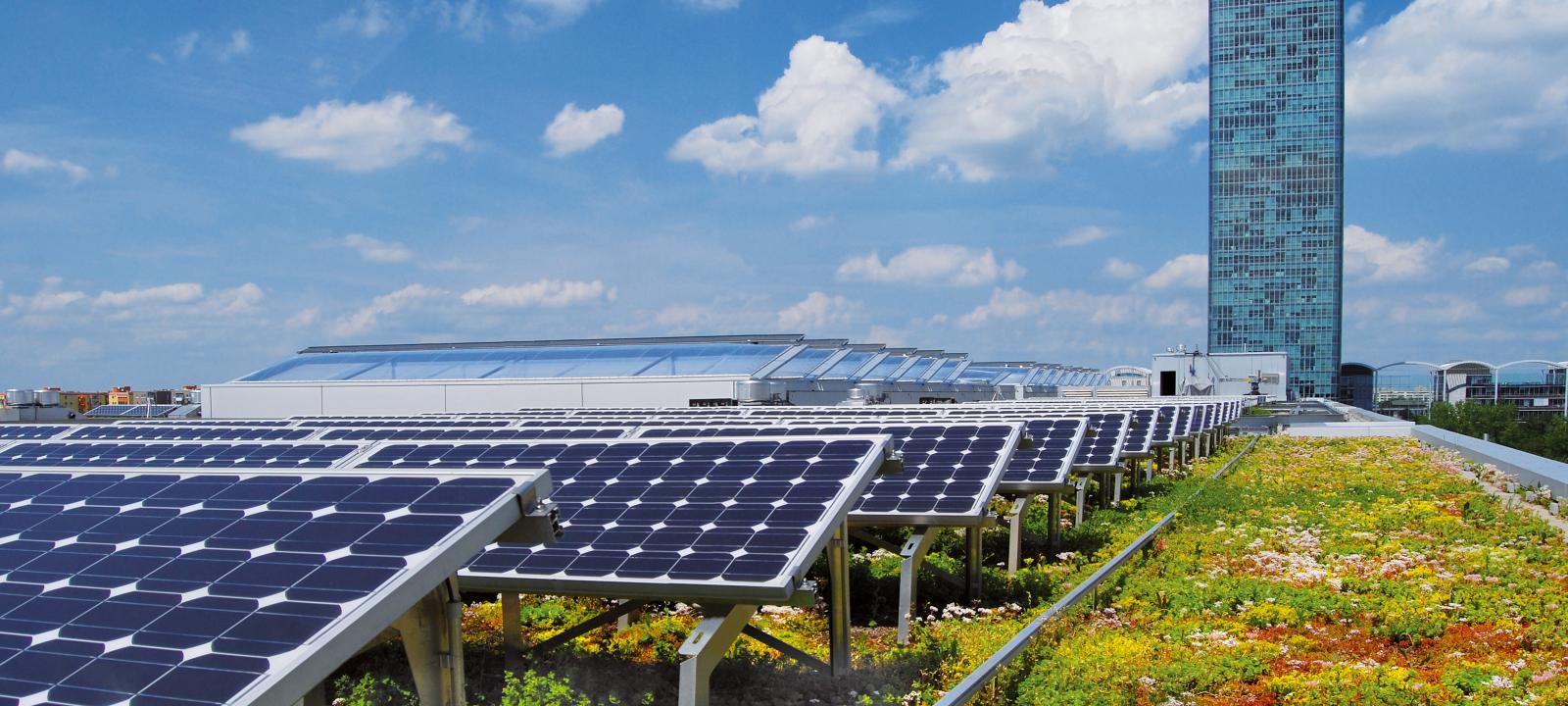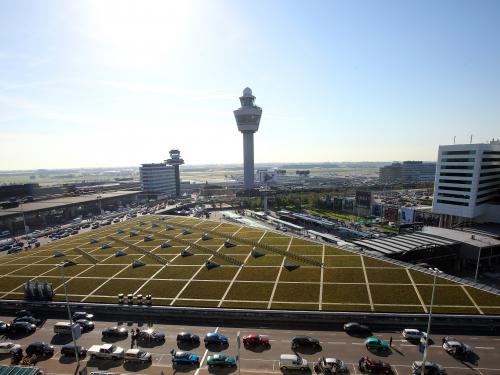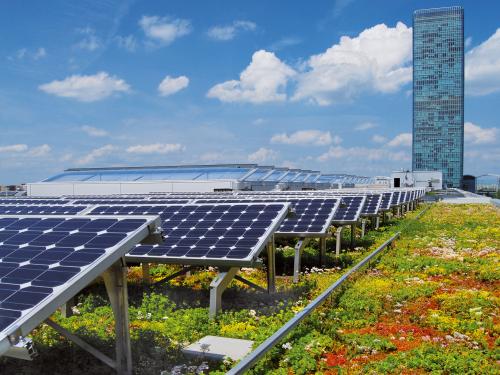Green Roofs and Solar Energy
Green Roofs and Solar Energy: Pure Synergy
A flat roof is one of the best locations for a solar energy system, given that the solar modules can be adjusted to the correct angle and the most appropriate orientation. It is a mistaken belief that one has to decide between a green roof and a solar system. On the contrary with the right system, significant synergy effects are achieved when combining both.
Advantages at a Glance
- Higher efficiency of the photovoltaic modules due to low ambient temperature of green roofs.
- No roof penetrations – green roof build-up as ballast against wind uplift.
- Free orientation of solar modules possible, no slipping of the drainage layer or the filter sheet.
- Water supply for plants below solar modules by water storage and distribution cells in ZinCo Solar Base SB 200.
- Combination with the fall protection device Fallnet® SB 200-Rail possible.
Variations for East-West Orientation
Systems with east-west orientation may achieve a more even yield over the course of the day and avoid excessive current peaks.
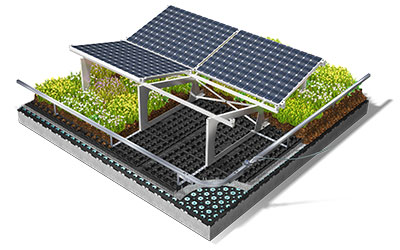 For an assembly of type “Butterfly”, the two Solar Base Frames meet with their lower sides. Rainwater is directed to the middle of the Solar Base SB 200 and distributed from there in both directions. In this case, a rather lush vegetation can be expected under the solar panels.
For an assembly of type “Butterfly”, the two Solar Base Frames meet with their lower sides. Rainwater is directed to the middle of the Solar Base SB 200 and distributed from there in both directions. In this case, a rather lush vegetation can be expected under the solar panels.
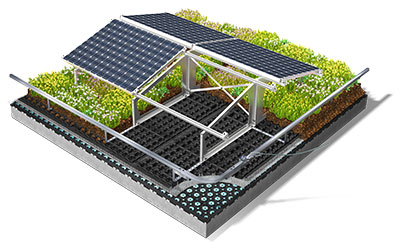 For an assembly of type “Saddle”, two Solar Base Frames are mounted onto a Solar Base SB 200 in a way that their higher ends meet in the middle. The slope of the panels directs more rainwater to the walkways between the solar panel rows, so that an increased plant growth can be expected there.
For an assembly of type “Saddle”, two Solar Base Frames are mounted onto a Solar Base SB 200 in a way that their higher ends meet in the middle. The slope of the panels directs more rainwater to the walkways between the solar panel rows, so that an increased plant growth can be expected there.
SolarVert® with Vertical Module Arrangement
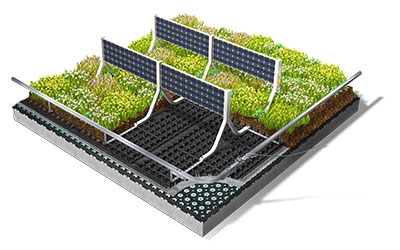 SolarVert® with vertical module arrangement combines the benefits of east-west orientation and south orientation. Bi-facial PV modules use solar radiation from both sides. Moreover, the vertical sub-structure allows for a greater supply of water and light to the vegetation.
SolarVert® with vertical module arrangement combines the benefits of east-west orientation and south orientation. Bi-facial PV modules use solar radiation from both sides. Moreover, the vertical sub-structure allows for a greater supply of water and light to the vegetation.
Safety on Rooftops
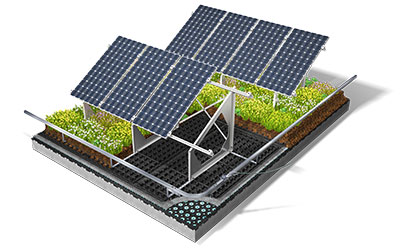 Fall protection systems are required to
Fall protection systems are required to
prevent people from falling off flat roofs while working. The ZinCo Fallnet ® SB 200 Rail was designed especially for the use in combination with ZinCo Solar Base SB 200. The periphery of the existing photovoltaic system is used for the fixing device. All you need in addition is a rail, rail supports and project related accessories. This allows for a quick and inexpensive installation of an effective fall arrest system that integrates well into the landscape.
Product Description
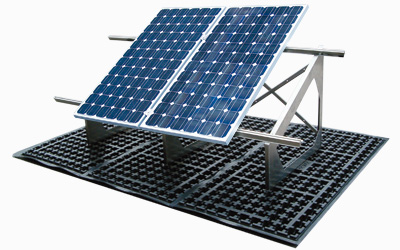 With its Solar Base, ZinCo incorporates solar energy into green roofs and creates synergies, whether it is for generating electricity (photovoltaic) or for heating and hot water applications (solar thermal). The height of the Solar Base Frames creates enough distance between the substrate layer and the solar panels, providing the plants with enough sunlight and rainwater and enabling appropriate maintenance.
With its Solar Base, ZinCo incorporates solar energy into green roofs and creates synergies, whether it is for generating electricity (photovoltaic) or for heating and hot water applications (solar thermal). The height of the Solar Base Frames creates enough distance between the substrate layer and the solar panels, providing the plants with enough sunlight and rainwater and enabling appropriate maintenance.
System Build-up
